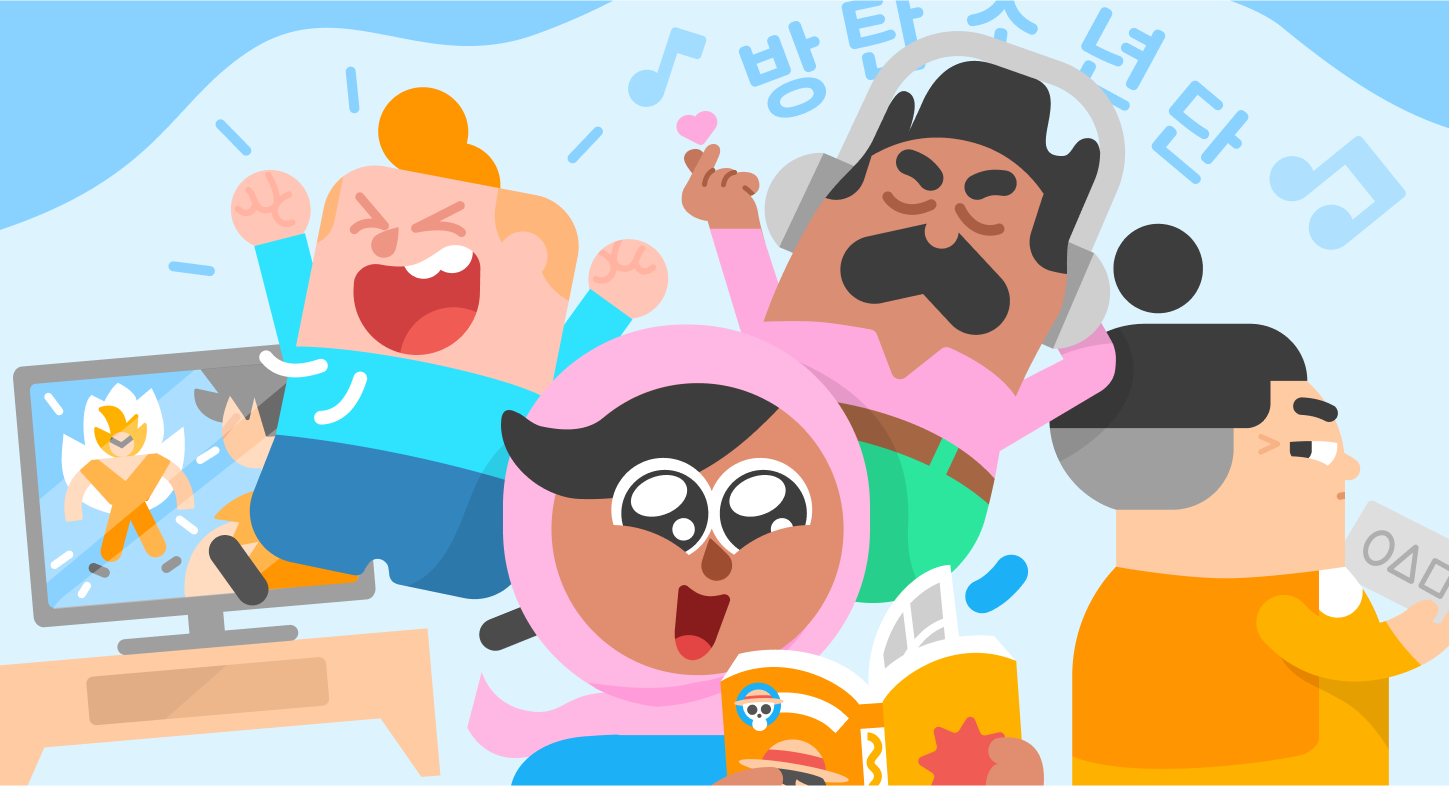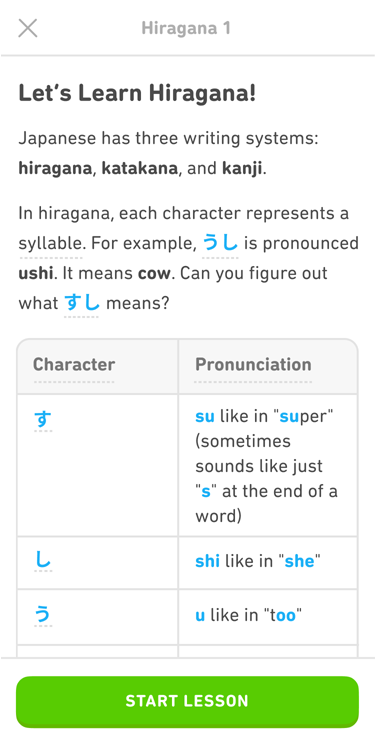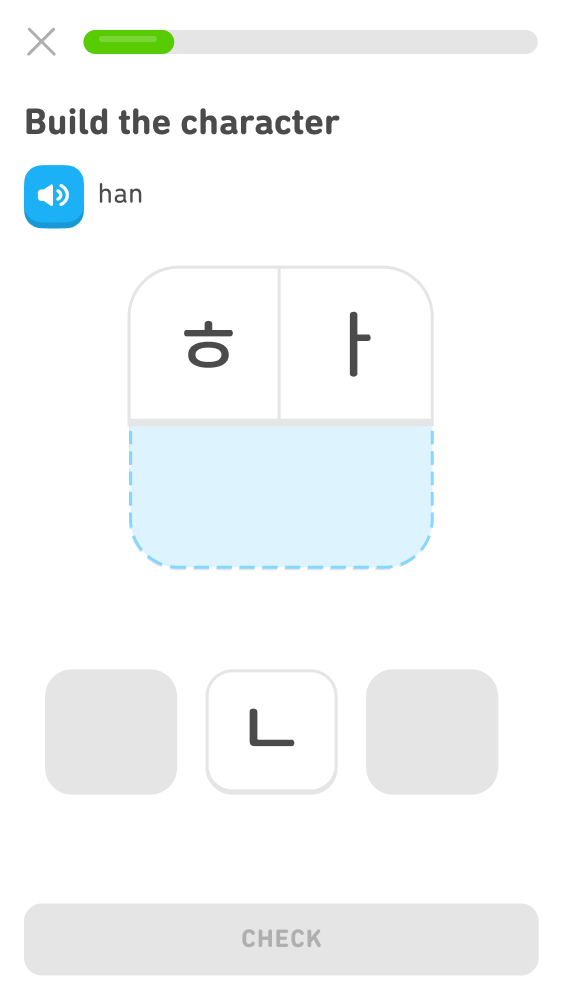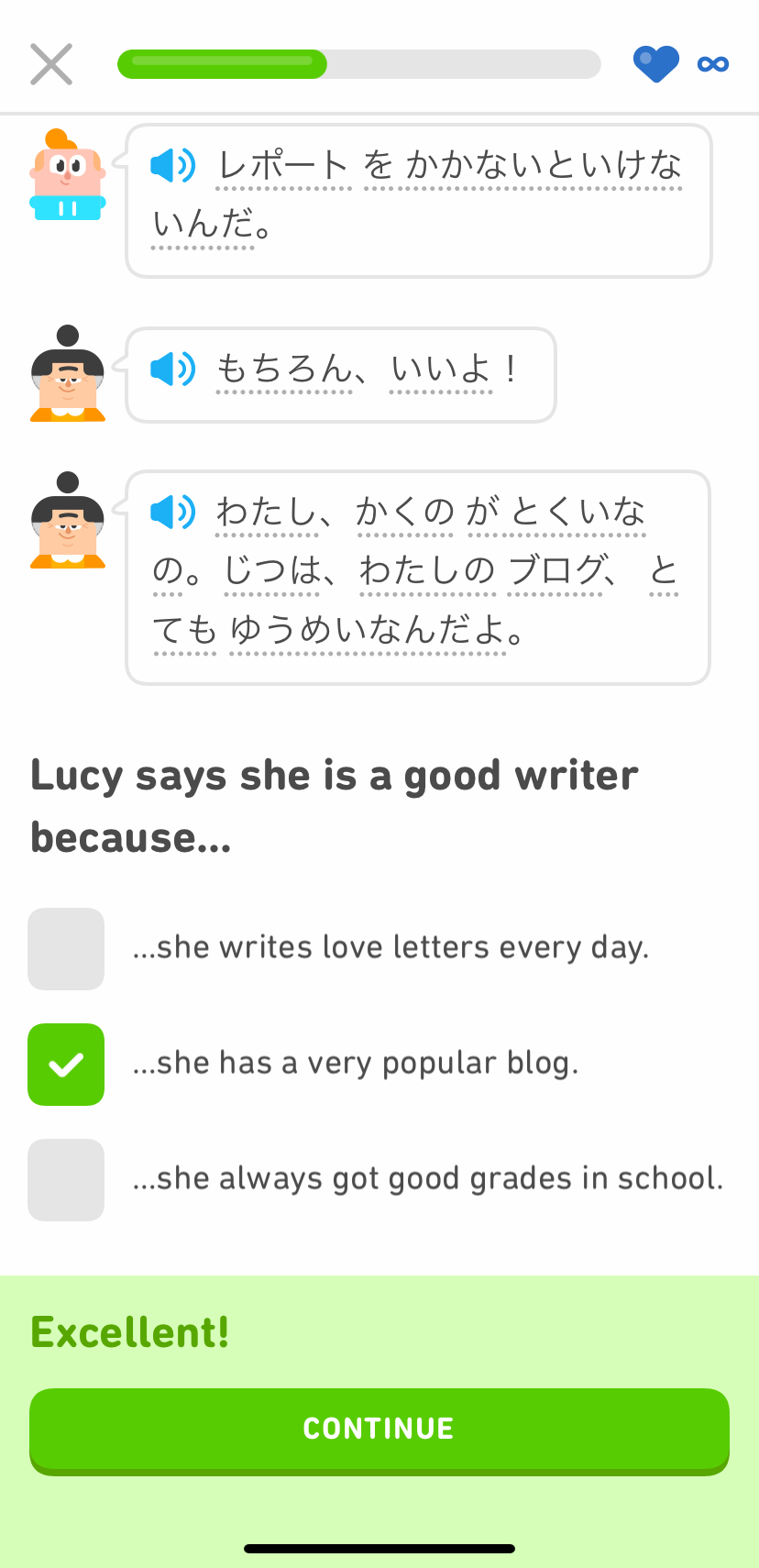It's been a momentous year for learners of Japanese and Korean: these languages are among the fastest-growing languages to study in the world, and their popularity continues to increase with each new pop culture phenomenon.
Are you considering learning a new language next year? Learn more about the growing interest in Asian languages, and how Duolingo makes it easier to learn the world’s most popular languages!
Japanese and Korean, by the numbers
According to the 2021 Duolingo Language Report and our latest course numbers:
- Japanese is now the 5th most popular language to study in the world, and is the fastest-growing language in the U.S. and U.K.
- Duolingo currently offers Japanese courses for English speakers and Chinese speakers
- There are over 15 million active learners in our Japanese courses
- Korean ranks in 7th place among most popular languages to study worldwide
- Korean is the fastest-growing language in Brazil, France, Germany, India, and Mexico
- Duolingo currently offers Korean courses for English speakers, Chinese speakers, and Japanese speakers
- There are over 11 million active learners in all of our Korean courses
Pop culture has young people excited about Japanese and Korean
So who are these millions of learners? A lot of them are under 30 and especially interested in entertainment and pop culture, according to our report on trends among Asian language learners. In fact, over 40% of the people studying Japanese, Korean, and Chinese are teens! In 2021, 18% of new Japanese learners worldwide were studying because of their interest in Japanese culture, and Squid Game is a great example of the power of Korean media in driving language-learning trends, too.

Learning to read Japanese and Korean on Duolingo
Our new reading tools help you learn to the sounds and shapes of the new writing systems you'll need for Korean and Japanese.
 |
 |
In the reading tab, you'll find exercises to help you match the character in your new language with the sound or syllable that it represents, tracing exercises to help you commit the characters to memory, and lots of practice using the writing system to form basic words and phrases. The tab includes different features to teach the unique properties of each language!
 |
 |
Dive into Japanese Stories
In 2021, we also introduced Japanese Stories! These bite-sized narratives get you reading and listening to Japanese through fun dialogues that are as big on the melodrama as they are on learning value. Stories allow you to integrate reading and listening practice in one fun activity -- and you can repeat stories to get extra speaking practice!
 |
 |
And there's more to come!
This year brought a ton of love -- and some exciting new features -- to Korean and Japanese on Duolingo, but we're not finished yet! We've got big plans for making our courses even more fun and even more effective in 2022. What features are on your wishlist?



